2020 is going to be a huge year for all of us, and we decided to kick this year off by bringing together some of the best marketing minds in the industry with our marketing industry event, RankUp. Sharing fresh ideas with fellow marketers and professionals who dare to think beyond the basics is a religion at iPullRank. This year, we decided to team up with our friends from Siege Media and share some insights on scalable content marketing.
The keynote speaker, Ross Hudgens (Founder/CEO, Siege Media), delivered an insightful presentation on the topic, followed by a panel discussion featuring Mike King (Managing Director, iPullRank), Asher Fusco (SEO Manager, The Zebra), and Mike Krau (Manager of Organic Demand Generation, 2U), where industry-related SEO questions were examined.
Presentation: Ross Hudgens and “Scalable Content Marketing: Lessons From Building 10,000+ Links/Year”

Ross founded Siege Media back in 2012 with a goal in mind, and that is to help businesses build, promote, and maintain amazing content for the world to see. Today, Ross and his talented team of 80 people have successfully established themselves as one of the top SEO-focused content marketing agencies out there, with offices in San Diego, Austin, and New York City.
His presentation provided an insightful look into content strategy, link building, and the synergy between them. Ross provided guidelines to his methodology and processes that proved successful time and time again.
1. Valuing Design:
“Since day one, we made design a critical component of our DNA and our content’s DNA.”
Ross Hudgens, Founder/CEO Seige Media
Ross starts out his presentation with an emphasis on graphic design. Having a strong design team is one aspect of Siege Media that defines who they are as an agency. They have over 30 designers on staff and over half of the team are content creators. Siege Media implements a process where every asset is carefully designed, then is reviewed by an in-house Art Director to ensure top quality. It is very apparent that visual design is something Ross and his team values very highly, from their sleek website to their content page design, everything that they produce is visually stunning.
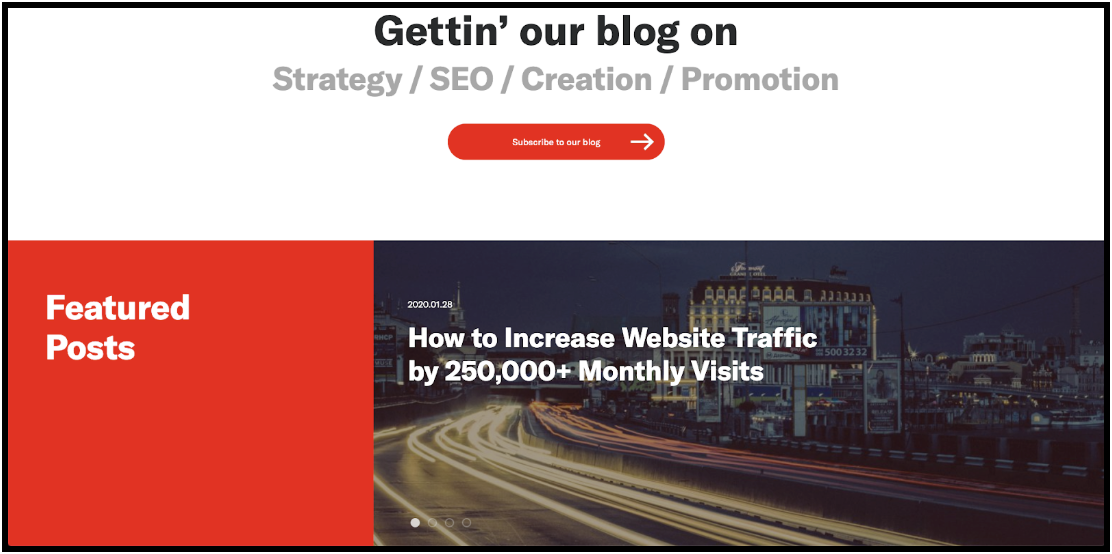
Graphic design is something that is often neglected by the SEO community. However, Ross and his team at Siege Media have made it apparent that by putting emphasis on design, their content will be more effectively communicated to their intended audience and will drive better results. Who doesn’t enjoy reading from a well-designed blog with great user interface, right?
2. Optimizing for Organic Links:
“Some people say “don’t build links, earn links”. Optimizing for organic links is meeting in the middle”
Ross Hudgens, Founder/CEO Seige Media
There are two things that you need to keep in mind in order to optimize for earned links:
- Building a great site experience
- Ranking for high link-to-view ratio topics
When it comes to earning links, Ross reiterates the importance of a well-designed website. A lot of clients with poorly designed websites want to have links built for them, however, manual link building for a site that is poorly designed won’t work, especially if your competitor is one of the big guys. Given that, Ross suggests that poorly designed websites should always prioritize getting a redesign first before going to an agency for link building efforts.
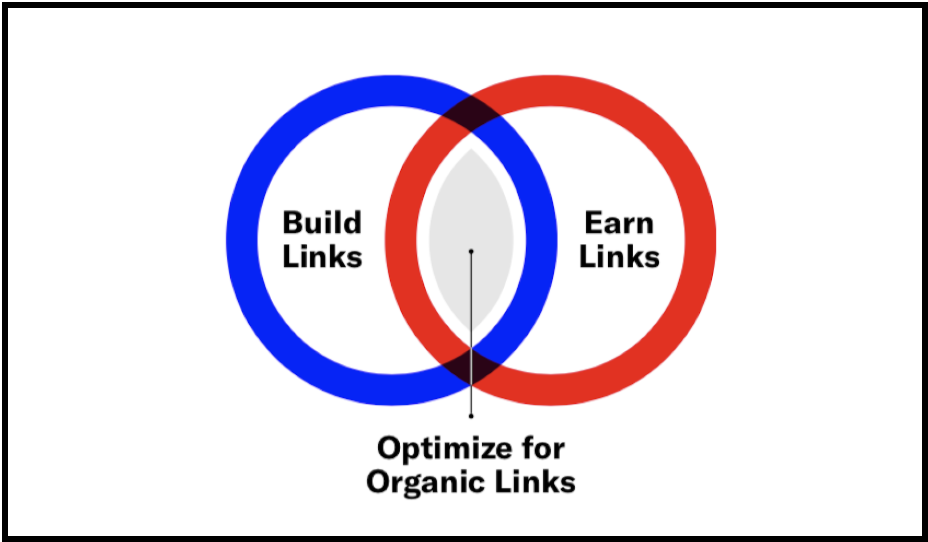
Now, if your website is well designed and your content page is of top quality, the next step would be to do research to identify high link-to-view ratio topics that exist for each client. What are high link-to-view ratio topics? Ross states that these topics generally have 3 characteristics:
- They’re rarely commercial and therefore not competitive.
- They’re generally someone looking for something to cite.
- They have 2-4 results with 50+ links.
Once these topics are identified, create “10x” assets that will be very difficult for your competitors to duplicate. And by “10x” asset, we mean content that is 10 times better than your best competition. Let’s be real, bad content is everywhere, but are we going to let bad content take over our search results? No, that is simply unacceptable. Once the “10x” assets are online, they will start to positively impact your website’s ranking.
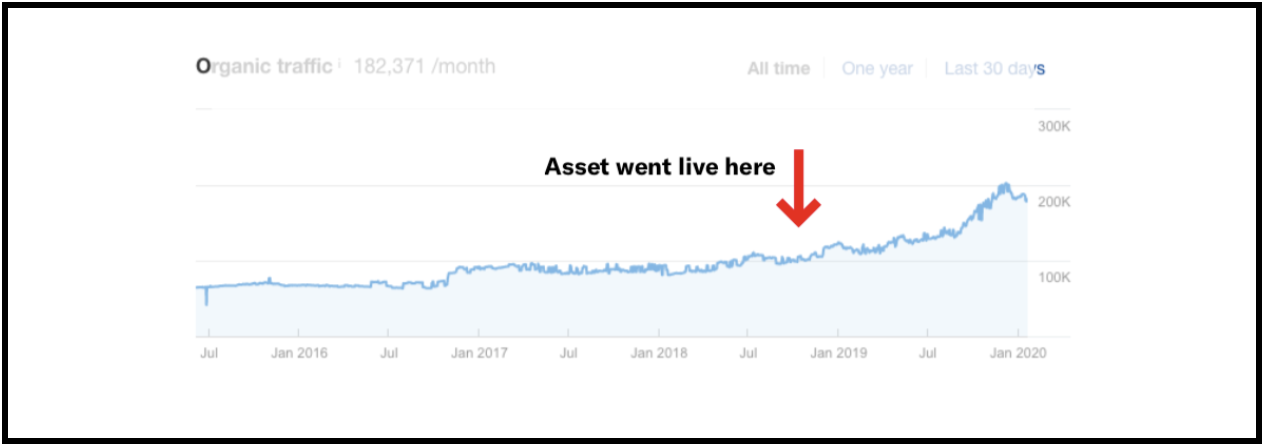
3. Mapping Buyer Personas to Linkable Audiences
“Unfortunately, audience doesn’t always 1:1 map to a link market. That said, almost every buyer persona does have an existing link market or set of link markets you can create content for.”
Ross Hudgens, Founder/CEO Seige Media
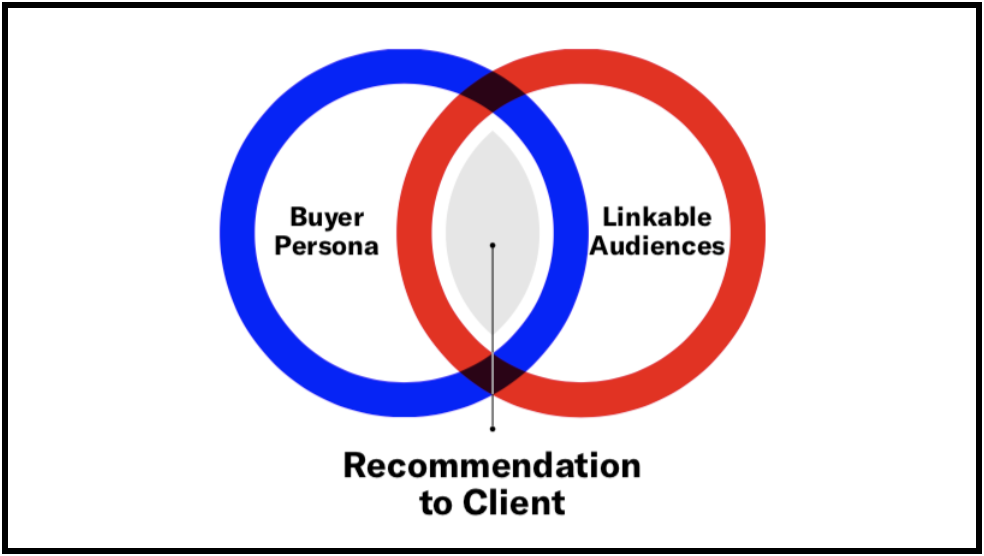
Ross states that during the early stage of the client identification process, it is important to map the client’s buyer personas to linkable audiences that are already known and then to the appropriate content type. The 5 most common, lightweight “linkable” content types include:
- Top or middle-funnel keyword-driven content that generates passive (organic) links.
- In-depth guides for most serious industries.
- Blog posts with shareable assets aimed at other bloggers
- Surveys/data studies with shareable images targeted at national news
- Data studies with shareable images targeted at local news
There are too many linkable audiences out there to include everyone, but there are several patterns that can be identified. Ask the question, is it a market aimed at older markets and/or serious topics? Most industries that we consider “serious” are industries with high levels of academic, medical or government interest and these industries often include people who love guides or long-form where authority is often a requirement. Also, keep in mind that serious industries also map to high-end news. There are a lot of people who fall into this category as you can see from the list below:
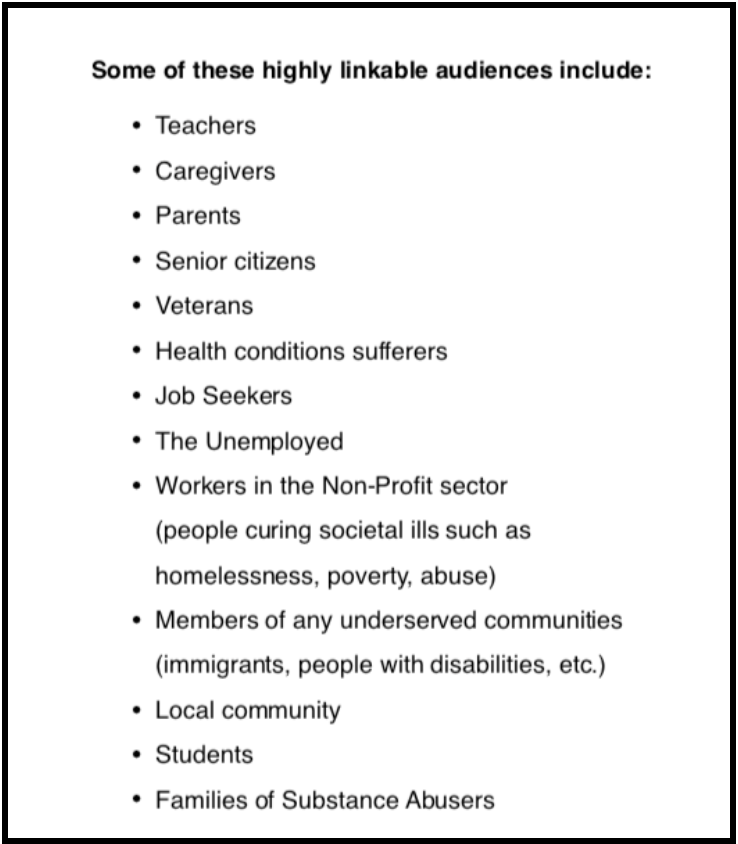
There are also other patterns that include a less serious audience, the lifestyle industry. The lifestyle industry warrants blog posts with shareable assets that bloggers tend to share between each other and although they are not “serious”, there is still value in this.
On a side note, business is the one “serious” market with a treasure trove of mid-tier bloggers. Ross had a lot of success pitching business blogs with blog posts containing shareable assets. This is a very beautiful intersection, as many are high DA without being news, so often the barrier to a quality link is a lot lower.
With that being said, success is about identifying what markets also fit with your customer’s buyer persona. Ross suggests that by knowing who your target audience is, create great content, fueled by design, then promotions through email outreach will result in success, usually. The rankings of many of those assets allow scale to occur, in addition to links/value that Google will want to reward… forever.
PANEL DISCUSSION:
Q1: Is there anything you are doing/plan to do differently 2020 than you did in 2019/the last couple of years?
Asher Fusco (SEO Manager @ The Zebra): From a content strategy and SEO content standpoint, I think that we at Zebra are focusing on bolstering existing content, going back and updating/refreshing content. Doing so is a lot of hard work but it has paid off and Google knows that and rewards us for keeping our content fresh and up to date. On the link building side of things, we’re planning on doing something similar, going back and finding evergreen content and perform outreach in a different sort of way to rekindle that, so less focus on scaling new content and more focus on the freshness factor.
Mike King (Managing Director @ iPullRank): We’ve been threatening for years to be like, we’re only doing 10x everything, we’re not doing anything for clients unless it’s 10x. This year, we are actually doing that. We’re turning down content assets if the client is like, “oh, we don’t need images for that, just rank the keywords”. I think that by doing so, we are going to set ourselves apart for generating the links through passive link acquisition rather than just doing outreach for everything.
Q2: What enterprise-specific strategies are you using today that you find effective?
Asher Fusco (SEO Manager @The Zebra): What’s worked well for us is approaching link building in a diverse way, we have an in-house PR team that does their work very well. We’ve worked with them hand in hand for a couple of years now, kind of educating them about the benefits of links from an SEO standpoint. Also working with an agency, build assets that are sharable, do outreach on your behalf, and also build passive links. Specifically passive linking from an SEO content standpoint, some of the content that we built with SEO and organic visibility in mind has really come up big for us from a link building standpoint.
Mike Krau (Manager of Organic Demand Generation @2U): On an enterprise-level, we’re really trying to focus on quality. So when we think about relevance and we think about credibility. One strategy in particular that worked very well for us is looking at topic clusters. Money pages are some of the hardest pages to get links to, so we try to support that mid-intent content as well as low-intent content and have that all match through the URLs and have links across the entire cluster.
Q3: Knowing that link index metrics aren’t real, how do you evaluate a link opportunity?
Mike King (Managing Director @iPullRank): To be perfectly honest, domain authority, moz trust, citation flow, ahfref URL rating, none of that stuff is real. They’re all just entertainment metrics for us as SEOs, it’s not what Google is using, it’s not how they measure sites. Nevertheless, we all have to use something to determine what a valuable link is.
Ross Hudgens (CEO/Founder @Siege Media): What we do, or ask people to do is to not worry too much about the domain authority if you have a quality site that is editorially maintained with a nice custom design. My belief is that the domain authority of a good site will increase with time so it doesn’t matter if it starts with 15 or 20 because most likely it will be 30 or 40 in the next month.
Q4: Most Enterprise companies have an internal PR group. How do you work with them effectively as part of a link building effort?
Asher Fusco (SEO Manager @The Zebra): Education is very important upfront. Educating traditional PR folks about the benefits of links from an SEO standpoint, kind of like an SEO 101 of how Google works, how Google considers a link a vote of confidence, and why it is important to go the extra mile to get a link rather than just an unlinked mention. Also, transparency is crucial, making sure that they know everything that we’re doing, and just keep tabs on everything that they’re doing will be very beneficial.
Mike Krau (Manager of Organic Demand Generation @2U): Taking the approach of dividing and conquering can be very effective because a link builder is going to have a very different skill set than a PR person so you really want to capitalize on those moments. If a PR person says, here are the types of sites that I’m going to contact, and here are the sites that you should contact for so and so reason, going with their expertise will most likely benefit you tremendously because that is what I think a PR person should be utilized for.
Q5: How can you most efficiently use content creation calendars to scale the link building process? Are there any new updates regarding guest posting as a link building strategy?
Mike King (Managing Director @iPullRank): I would recommend you guest post on sites that get scraped a lot, or go after guest post on sites that rank for keywords you want to rank for. Going back to the idea that Ross talked about earlier in the presentation, the things that already rank when you get links from them, are more powerful than things that don’t already rank for some of your target keywords.
Ross Hudgens (CEO/Founder @Siege Media): Some things don’t even make sense for you to rank for them necessarily. You can leverage that other site to rank for them with their authority. From the content calendar standpoint, I think it’s mostly just to make sure not to step on other people’s toes such that there are issues. One thing that comes up with our clients is that they’ll say, this is our focus this month, or we want to push this category or a product page, but we already have a plan to do something else, so it is important to be reactive to what the clients want and try to find a good balance between our long term strategy and what our clients throw at us last minute.
If you are looking for the best way to stay in the know about all things search, RankUp is an event you need to attend. Yes, the team at iPullRank may know more about SEO than the average marketer, but that is exactly why Rank Up is so beneficial. Every Rank Up, we are amazed by the different knowledge bases our attendees have. Being able to converse with everyone from your college student looking to get ahead in their classes, all the way to CMO’s in the digital marketing space, Rank Up provides the perfect setting for personal and professional growth. The energy of RankUp is amazing! Everyone is happy to share their questions and experience with other attendees who want to know more. And that is really the point of this event, which is for people to make great connections and share ideas. In all, RankUp is perfect for anyone interested in networking and learning from some of the best in the industry. We hope to see you next time at our future RankUp events, you won’t be disappointed!
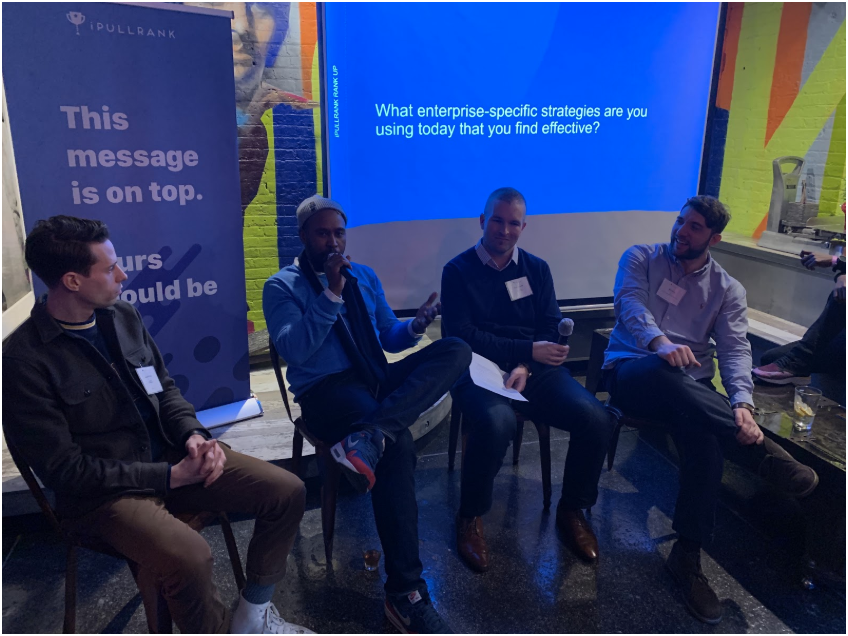
The post Rank UP Event Recap: Scalable Content Marketing appeared first on iPullRank.
iPullRank https://ipullrank.com/rank-up-event-recap-scalable-content-marketing/